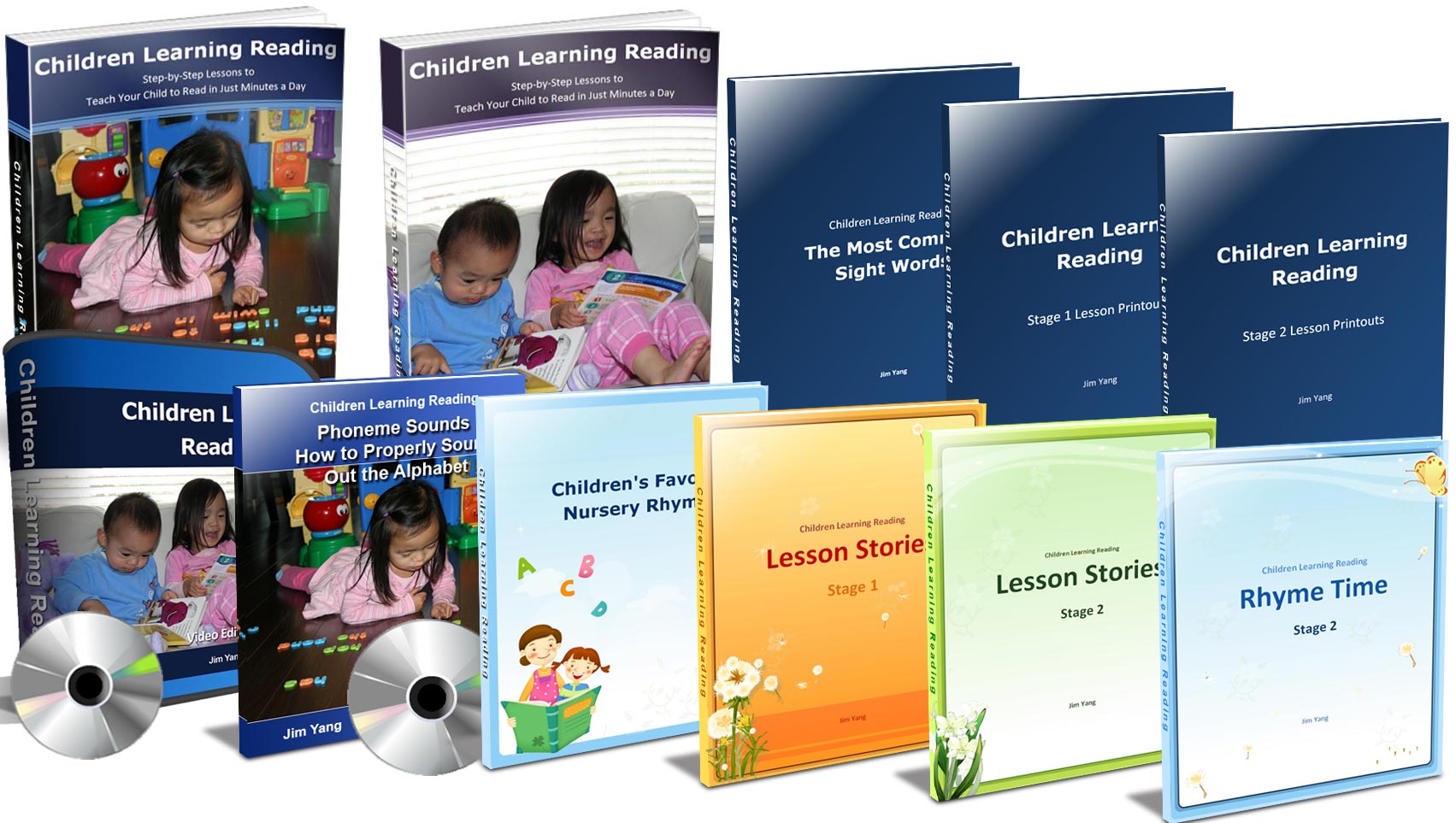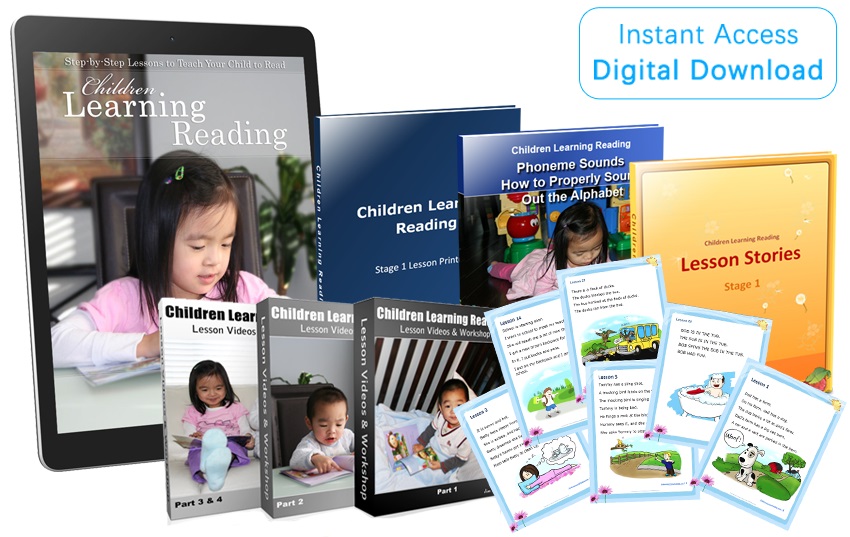What Are Sight Words And How To Teach Sight Words
What Is A Sight Word?
The same 100 words are used in 50% of reading texts. If a word is frequently used and repeated in the English language it is known as a sight word. You will be familiar with a lot of these words (probably all of them) as you will have seen them thousands of times. These sight words are very important for reading, and some of them cannot be sounded out easily or taught by illustration.
It would be difficult to imagine the word “the” and sound it out each time you wanted to use it. There are no pictures that you can show to a child about the word “the”. It is therefore important that your child recognizes words like “the” by sight. Mastering words like this by sight is an important part of your child’s reading development.
When your child is able to master sight words, they will be able to comprehend around half of the words used in everyday text. By memorizing these words there is no requirement to decode the word each time, and your child can move on to the more difficult words and start to decode them.
The use of sight words will help your child to quickly understand the meaning of sentences by picking up on important clues. As an example of this, the word “and” normally signifies that there will be additional descriptors, actions or characters to follow. The same goes for the word “into” which will suggest there is going to be a location switch or a movement of ideas.
Once sight words have been mastered by your child and committed to memory, the sounds and meanings of the words will be in their consciousness. It becomes an automatic action and no effort is required to read or speak the words.
Sight words are sometimes called “high frequency” sight words, “core words” or even “popcorn” words. The “popcorn” term comes from the fact that once memorized the words should just “pop” out every time that your child sees them.
Dolch Sight Words
Any word that your child sees on a regular basis could be classed as a sight word. A few years ago, E. W. Dolch went on a mission to find the most repeated words in the text of children’s books. He looked at a wide variety of books for children, and he was able to spot words that appeared regularly.
He created the Dolch site words list, and claimed that if a child could memorize all of these words then they would be able to read between 50% and 75% of any children’s books. There are 220 words on the Dolch sight words list which he calls the “service words”, and there are also 95 of the most commonly used nouns.
The service words on Dolch’s list are a mixture of the most frequently used adjectives, verbs, adverbs, conjunctions, pronouns and prepositions. He divided the large list into smaller lists that contained specific words that he believed children of certain grades should learn. So for example there would be 1st grade sight words and second grade sight words.
The Dolch sight words lists were organized based upon how often words were used in the books that he examined. The reason for this was that he believed if a word was used more frequently, then a child should learn these words first.
There is a pre-primer Dolch sight words list which he recommends should be learned by children before they finish first grade. There is another famous list called Fry’s sight words. The expectation is that by the time a child has finished at kindergarten, they should know around 30 sight words and this number will increase throughout grades 1-3 until they have mastered the 200 + sight words from the 11 lists.
The kinds of words found on the lists will include the, and, of, he, she, it, in, on and I. Although it is possible to “sound out” a lot of these words, Dolch and others believed that it would lead to more fluent reading if these kinds of words were memorized.
Some people will define sight words as those words that have spellings that do not follow normal decoding rules, and therefore are difficult to sound out. If this more narrow definition is applied then there would only be a few sight words that would need to be memorized such as “one”, “the” and “who”. The truth is that most of the words in the Dolch and Fry lists can be easily decoded, and critics of the sight words approach will often question why they have been included.
How To Teach Sight Words
Teaching young children how to read and remember sight words can be a challenge at first. You will need to be patient and help them as much as you can. If they make mistakes then do not make an issue out of this. There is no place for negativity when you are teaching a young child how to read.
Use Pictures To Teach Sight Words
The use of pictures is very powerful when learning to read. Without even realizing it, we will use pictures in our minds to visualize what we are trying to learn, and this helps reinforce the information into our memories. This is best illustrated by going to a new location. It is very likely that you will use some visual markers such as unusual signs or sights to help you to get there, even if you have written directions.
So it is a good idea to show your child drawings or images together with the written or printed versions of the sight words. It will help them connect the object in the drawing to the words. Sight word flashcards or even posters that have a related picture in color with the word beneath it are excellent aides for learning sight words.
You can also encourage your child to draw their own pictures of the word on the same card or poster, as this will strengthen the connection between the image and the word. It will not be possible to create images for all of the sight words as there is no obvious picture for the word “the” for example.
Teach Sight Words Through Listening And Saying
Although sight words are the most commonly used in written text, they will also be used very frequently in everyday conversations. It is therefore likely that your child will already have these words in their vocabulary, as they will have heard them being spoken in conversations and will probably use them in their own speech.
To read these words your child just has to make the connection between the written version of the words and the spoken version which they already know. You should make an explicit connection between the sounds that your child knows and the written version of these words. An easy way to do this is to say a word and then point to it in written form at the same time.
You should also encourage your child to say the sight words after you do, to reinforce the connection. If your child can write then you can have them speak the word after they have written it. If they are a little more advanced then you can write a simple sentence, and then ask your child to sort through a bunch of sight words written on cards to find a word that best completes the sentence.
Repetition Is A Key Sight Word Technique
It is no use expecting your child to remember sight words after only seeing them once. You need to use repetition to ensure that the various sight words are memorized. You should encourage your child to read and write site words a number of times. The more that they do this, the more likely it is that they will remember the words.
It is a good idea to have your child read and write the sight words several times to improve their spelling. Tests have shown that if a child writes a sight word and then speaks the same word at least five times they should be able to memorize it. You can put up a “word wall” at home, where the sight words will be placed as a subtle reminder to your child.
They are likely to look at the words on the wall quite often, and this will help to reinforce the words in their memory. You can also use the word wall when you are teaching your child sight words. Any new words learned would need to be added to the wall.
Using Context With Sight Words
It is recommended that your child be exposed to sight words being used naturally as much as possible. This is much better than just learning the words in isolation. It will help your child develop an understanding of the meaning of the words and their overall significance.
Teaching sight words through the use of literature is the preferred method here. It will be extremely effective and your child is likely to learn the words faster. You can obtain children’s books that are “levelled” for certain age groups. They will contain the sight words that are deemed appropriate for your child’s age. You can also write short sentences that contain sight words that your child has learned, and ask them to identify and say the words. After a while your child will be able to write their own sentences.
Using Games To Teach Sight Words
Learning to read should always be as fun as you can make it, and the use of games will make your child more attentive and willing to learn. You can create sight words games at home and adapt them to the set of sight words that your child is currently learning.
Go Fish is a popular kid’s game that you can adapt with the use of index cards with sight words written on them. All you need to do is to write the sight words on two cards each and then create a pack and play the game.
You can also use the same pack of index cards to play a memory and concentration game where your child will need to match cards with the same words on them. You will lay the cards face down and then your child will pick two cards. If they match they will keep these cards. If they don’t match then they will need to lay them face down and try to remember where they are located to make a match later on.
You can play a word search game using sight words. You can find several free sight word games online to do this. Another game you can play is Bingo but with words (it could be called “Wordo”). You would use sight words instead of numbers on the cards, and you can call the sight words out and your child would then check if the words are on their card.
Magnetic spelling games can also be played. For this you will need some letter magnets and a metal surface to play on. You will call out certain sight words and your child will then spell them out using the magnetic letters.
Using Songs To Teach Sight Words
Children tend to love learning songs and singing them so you can use this to your advantage when teaching sight words. They are far more likely to remember the words of a new song that you have created together using sight words.
When you create the songs you need to incorporate the sight words that you want your child to remember. Use the words as often as possible in the song. Don’t make the song too long but try and make it catchy. Using songs is another form of teaching that will help your child to learn the words and to commit them to memory.
The most important thing to remember when you are trying to teach sight words is to make it as fun as possible. If it is fun then your child will want to do it over and over again. If they see it as a chore then they will do everything that they can to avoid learning sight words with you.
The Problem With Sight Words
Sight words learning is part of the whole language learning method. Some people will tell you that the whole language method of learning to read has helped many kids learn how to read, but it is also responsible for creating a lot of reading difficulties amongst kids.
When words are taught as a whole you are not teaching your child the essential parts of those words. It is not advisable to start with whole word teaching when you want your child to learn how to read. Your child should be taught the alphabet first, and the sounds that the individual letters (and the combinational sounds of certain letters) make.
Phonics Teaching Is A Better Alternative
Learning the parts of the words first will make your child a better reader. Once they have learned the parts they will be able to combine these parts and form whole words. We are talking about phonics here, and the learning of the individual letters and the sounds that they make.
As your child learns the different sounds they will increase their phonemic awareness. This is a key factor to becoming a fluent reader at a young age. Your child will have learned the “code” for reading, and will be able to tackle more complex words with ease.
Compare this to sight words learning. The theory is fine about learning the most commonly used words. But once your child has learned all of those words where do they go from there? How many words is it possible for a child (or even an adult) to memorize? Maybe 1000 or possibly 2000 words? That would be tough going.
What it would also mean is that your child would not know about the other hundreds of thousands of words. It is estimated that the English language contains between 600,000 to a million words. That is an awful lot of words to miss out on.
It has been proven in many tests and studies that children are much more likely to become fluent readers through the use of synthetic phonics and phonemic awareness teaching, than they are through the use of sight words and whole language teaching.

It is very unrealistic to imagine that children will be able to memorize all of the words that they need to be fluent readers and be able to do well academically. With synthetic phonics and phonemic awareness your child will be able to understand the parts of words, and then combine them and easily decode new words that they come across and pronounce them properly.
If you want to give your child a real head start in life then teach them to read using this method. There are some excellent reading programs that can be used at home to teach your child how to become a fluent reader using synthetic phonics and phonemic awareness.
Children from the age of two years old can be taught how to read using these principles, but you must choose the best program to do this. Jim Yang is the creator of Children Learning reading. He taught his children to read when they were just two years old using the methods in the program. The Children Learning reading program is a lot of fun for kids, and they will be eager to learn with the methods. As a parent you will receive simple to follow step by step instructions that will teach your child to read in as little as 11 weeks.
Give your child the best gift you can by teaching them how to read with Children Learning Reading. This inexpensive yet very effective program is all that you need. Learn more about this amazing reading program here.



